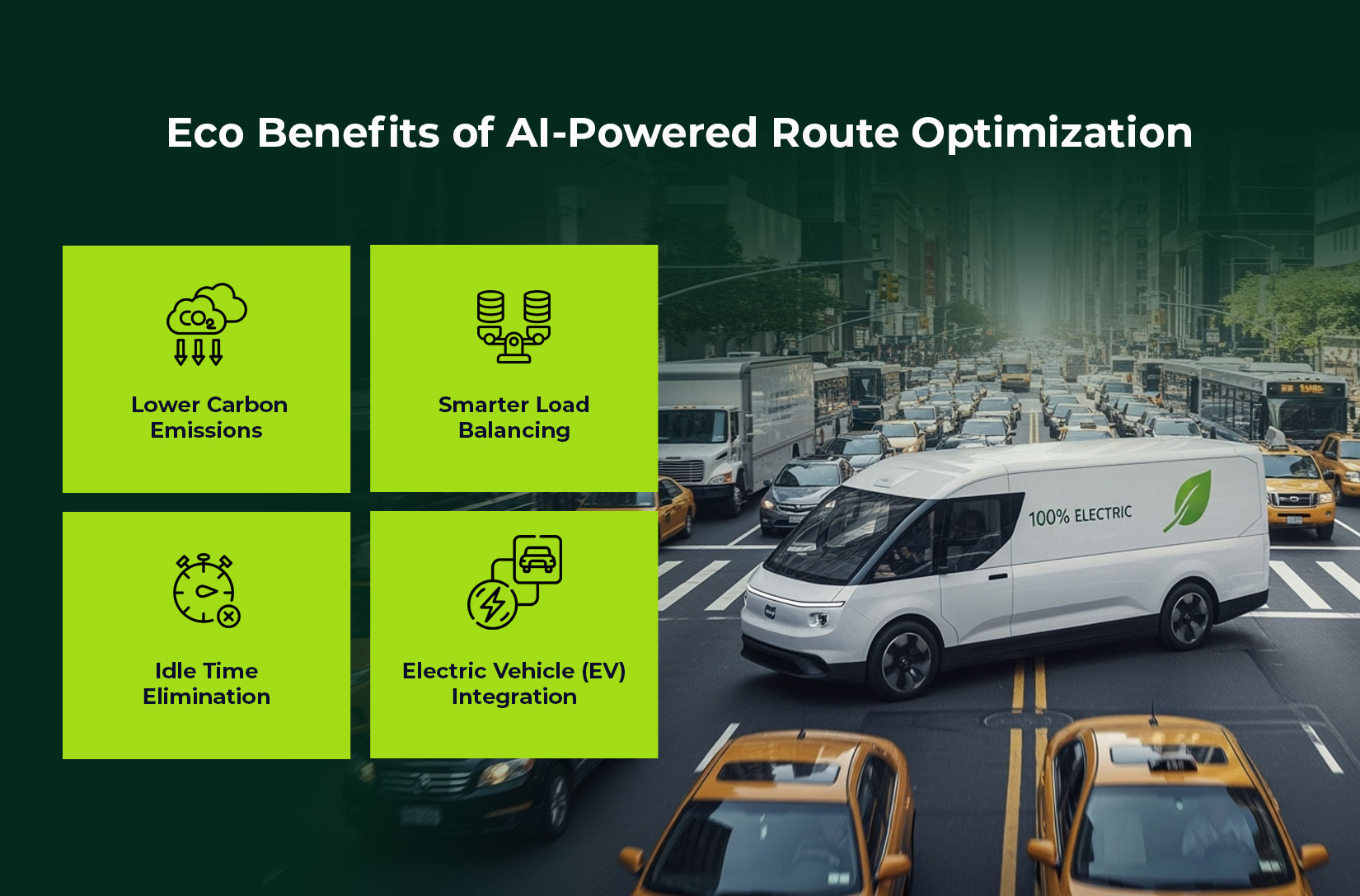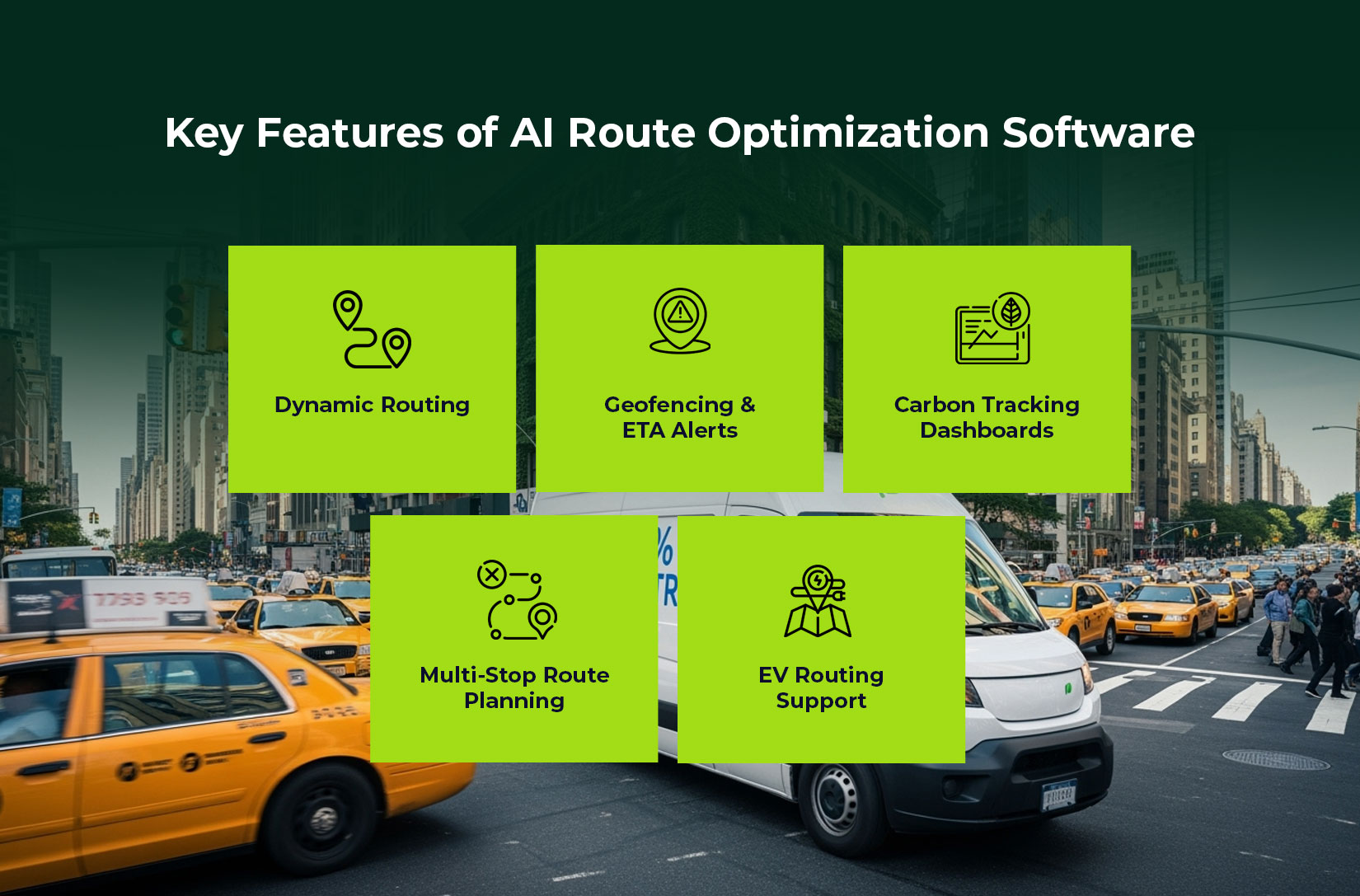
Deliver Green, Drive Smart: The Rise of AI Route Optimization
Logistics companies nowadays are under increasing pressure to delivery faster and cleaner. But they are facing huge obstacles in soaring fuel costs, tightening emissions and rising customer demands. Enter AI Route Optimization- a game changing technology. Its transforming how fleets operate, not just for efficiency but also for environmental sustainability.
According to IEA, transportation accounts for 24% of direct CO2 emissions from fuel combustion globally. The need for smarter, greener delivery solutions has never been more urgent. AI-powered tools are take the center stage helping fleet managers to- cut down on emissions, reducing idle time and optimum use of resources.
What is AI Route Optimization?
AI Route Optimization is calculation of the most efficient routes by using artificial intelligence and machine learning algorithms. AI contemplates real-time traffic, weather conditions, delivery windows, vehicle type and to continually refine the best routes, unlike traditional systems that rely on static data.
At its core, the software dynamically adapts to changes on the road and within supply chain. This helps in ensuring that every vehicle operates with the maximum efficiency and minimal waste.
Eco Benefits of AI-Powered Route Optimization

Here’s how route optimization powered by AI helps the delivery go green without sacrificing service quality of the shipment and the speed.
1. Lower Carbon Emissions:
AI tools can directly cut fuel consumption, by optimizing delivery routes and decreasing unessential miles. As per a report by McKinsey, optimized routing can reduce fuel usage by up to 15%. This will significantly lower a fleet’s carbon footprint.
2. Smarter Load Balancing:
AI systems not only just plan routes, they also help in optimizing the load per vehicle. By improving truck fill rates and avoiding underused trips, fleets can decrease the number of vehicles on the road. This will help in reducing the congestion on the road leading to lower carbon emissions.
3. Idle Time Elimination:
Long traffic jams, wait times and inefficient scheduling wastes time, but it also wastes fuel. AI for route optimization by adjusting routes in real-time and changing the ways of the vehicles during delays, helps in cutting engine idle time. The result of this will be less fuel burned while waiting and sitting patiently.
4. Electric Vehicle (EV) Integration:
The software plays a major role in overseeing EV-specific issues like battery range and availabilities of charging station. This helps in ensuring that EVs are routed in ways that support both sustainability goals and operational uptime.
Real-Time Routing Meets Real-World Impact
Modern AI-powered route optimization engines are able to process millions and millions of data points in seconds. A few platforms like LogiNext Solutions also use historical delivery data to make predictive decisions. Thereby, ensuring that routes are not just optimal and smarter for today but also for tomorrow.
In fact, companies that have been using advanced AI routing systems, have reported:
– Up to 25% reduction in route planning time
– 10-20% increase in on time deliveries
– 15-30% improvement in fuel efficiency.
The software is not just better for the health of our planet or for logistics but also for business.
Key Features of AI Route Optimization Software

The best software offers a range of features to drive sustainability and performance:
1. Dynamic Routing:
The platform is able to adjust routes in real-time based on live traffic conditions, weather patterns, road closures and end moment delivery changes. This helps in ensuring vehicles stay on the most optimum path thus reducing delays and unnecessary fuel usage.
2. Geofencing & ETA Alerts:
The engine enables real-time updates by setting up virtual boundaries around delivery zones. Drivers and customers receive accurate and on-time ETAs and alerts. This helps in reducing failed attempts, minimizing idle vehicle time and improving customer satisfaction.
3. Carbon Tracking Dashboards:
The software allows fleet managers to observe fuel consumption and emissions in real time. The dashboard is able to provide clear insights into carbon savings. This makes it easier to calculate environmental impact and report on sustainability metrics.
4. Multi-Stop Route Planning:
AI route optimization engine is able to optimize routes to include multiple deliveries per trip. This helps to boost vehicle productivity and reduce the number of trips required. Thus, helping save fuel and lower emissions.
5. EV Routing Support:
The system is able to manage electric vehicle needs like battery range, optimal speed and nearby charging points. It ensures EVs can complete the routes while maintaining green goals.
Industry Use Cases: AI Routing in Practice
1. Retail & E-commerce:
Large-scale retailers are using AI routing to achieve same-day deliveries without violating ESG targets. Organizations can make sure their vans are not only loaded ASA to the best efficiency possible but also that they can route around congestion. Also, they do all of this at peak shopping times.
2. Food & Beverage:
Perishable items require increasingly reliable and speedy delivery. AI uses real-time data and ideally uses refrigerated trucks on the quickest route to eliminate backtracking and unproductive detours. Thereby maintaining product pricing through reduced fuel and extending freshness upon delivery of the item.
3. Courier & Parcel:
The last-mile aspect of delivery can be the worst contributor to pollution in the journey. AI can shape those last mile runs with as good of multi-stop drops as possible. This will help to avoid emissions and dispatch delays while operating in urban settings.
The Future is Green And Smart
The Future is Green and Smart Sustainability is no longer a “nice to have.” It’s a prerequisite for logistics businesses. Government directives, consumer preferences, and cost pressures have coalesced to shift green eco-efficient logistics to a competitive advantage. AI for route optimization provides businesses with the technology stack they need to deliver at scale, fast, smart and sustainably.
As advances come into place with Generative AI, predictive analytics, and digital twins route optimization will take on a whole new meaning. Think near-zero waste deliveries, tailored delivery windows, and fully autonomous planning systems. The future fleet is not only electric – it’s algorithmically intelligent.
Conclusion
AI route optimization is more than just a technology upgrade. It is a way to ensuring that your company is embarking on a path to a cleaner and more efficient delivery model. Investing in AI route optimization software will allow logistics businesses to cut emissions, reduce costs and ensure a better experience for the customer.
If your logistics operation has not yet adopted an AI-driven route optimization solution, now is the time to incorporate one. Sustainability is not a goal for “someday”, it is a business imperative for today. Click on the red button and book a demo with LogiNext Solutions for the best software.
66







@LogiNext